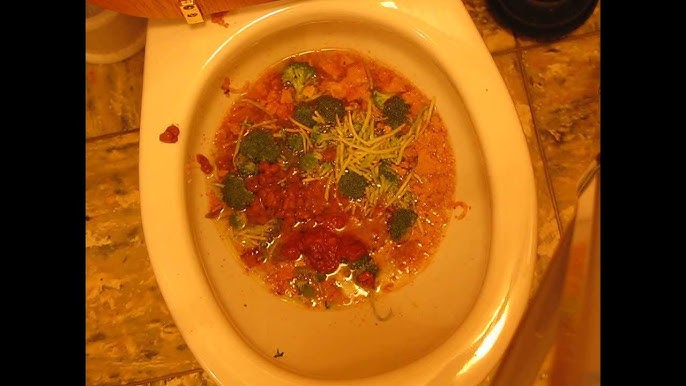Is it Feasible to Flush Food in the Toilet?
Is it Feasible to Flush Food in the Toilet?
Blog Article
Just about everyone has their own unique way of thinking with regards to Flushing Food Down the Toilet?.

Introduction
Many individuals are often faced with the issue of what to do with food waste, particularly when it concerns leftovers or scraps. One usual inquiry that occurs is whether it's okay to flush food down the commode. In this short article, we'll delve into the reasons why people may take into consideration purging food, the repercussions of doing so, and different techniques for appropriate disposal.
Reasons that people could think about purging food
Lack of understanding
Some individuals might not recognize the possible harm brought on by purging food down the commode. They may erroneously believe that it's a safe method.
Comfort
Flushing food down the commode might feel like a fast and very easy solution to dealing with undesirable scraps, particularly when there's no neighboring trash can available.
Idleness
Sometimes, individuals may merely pick to flush food out of sheer laziness, without considering the consequences of their actions.
Effects of flushing food down the bathroom
Environmental effect
Food waste that ends up in rivers can add to contamination and damage marine environments. Additionally, the water utilized to purge food can stress water sources.
Pipes issues
Purging food can cause stopped up pipes and drains pipes, triggering pricey plumbing repairs and troubles.
Kinds of food that need to not be flushed
Coarse foods
Foods with coarse structures such as celery or corn husks can get entangled in pipelines and trigger obstructions.
Starchy foods
Starchy foods like pasta and rice can absorb water and swell, causing obstructions in pipelines.
Oils and fats
Greasy foods like bacon or food preparation oils should never ever be purged down the bathroom as they can solidify and create clogs.
Appropriate disposal approaches for food waste
Utilizing a waste disposal unit
For homes furnished with waste disposal unit, food scraps can be ground up and flushed through the pipes system. Nevertheless, not all foods appropriate for disposal in this manner.
Recycling
Specific food packaging products can be recycled, minimizing waste and reducing environmental effect.
Composting
Composting is a green means to deal with food waste. Organic materials can be composted and used to enrich dirt for gardening.
The relevance of correct waste management
Decreasing environmental harm
Proper waste management methods, such as composting and recycling, assistance decrease air pollution and preserve natural resources for future generations.
Safeguarding plumbing systems
By staying clear of the method of flushing food down the toilet, property owners can protect against expensive pipes repairs and preserve the honesty of their pipes systems.
Conclusion
In conclusion, while it might be tempting to flush food down the commode for benefit, it is very important to comprehend the possible consequences of this action. By embracing appropriate waste management techniques and throwing away food waste responsibly, individuals can contribute to healthier plumbing systems and a cleaner atmosphere for all.
FLUSH FOOD DOWN THE TOILET?
FLUSHING FOOD CAN CAUSE BLOCKED DRAINS IN YOUR HOME
All of the plumbing fixtures in your home are connected to the same sewer pipe outside of your home. This outdoor sewer pipe is responsible for transporting all the wastewater from your home to the Council sewer mains. Even small pieces of food that go down the kitchen sink can cause problems for your sewer. It should therefore be obvious that flushing larger bits of food, such as meat, risks a clog in either the toilet itself or the sewer pipes. Flushing greasy food is even more problematic because oil coagulates when it cools, coating the interior lining of your pipes.
THE TOILET IS NOT A BIN
Food isn’t the only thing that people shouldn’t be flushing down the toilet. People use the toilet to dispose of all kinds of things such as tampons, makeup wipes, dental floss, kitty litter and even underwear. Water goes to great lengths to educate residents about the high costs and stress placed on wastewater treatment systems simply from people flushing the wrong stuff down the toilet. It costs taxpayers millions of dollars each year, and homeowners thousands in blocked drain repairs.
FLUSHING FOOD IS A WASTE OF WATER
Flushing food is a waste of our most precious resource - water. In June this year Level 1 water restrictions were introduced to protect water supply from drought conditions. Much of New South Wales continues to be affected by prolonged drought with recent figures revealing up to 97 per cent of the state remains in drought. Depending on whether you have a single or dual flush toilet, every single flush uses between five and 11 litres of water. In the current climate this is a huge amount of water to be wasting on flushing food that should be placed in the bin (or better yet, the compost).
https://www.jabplumbingsolutions.com.au/blog/can-you-flush-food-down-the-toilet

I found that post about when doing a search on the web. For those who enjoyed our blog entry kindly do not forget to pass it around. We truly appreciate your readership.
Booking Report this page